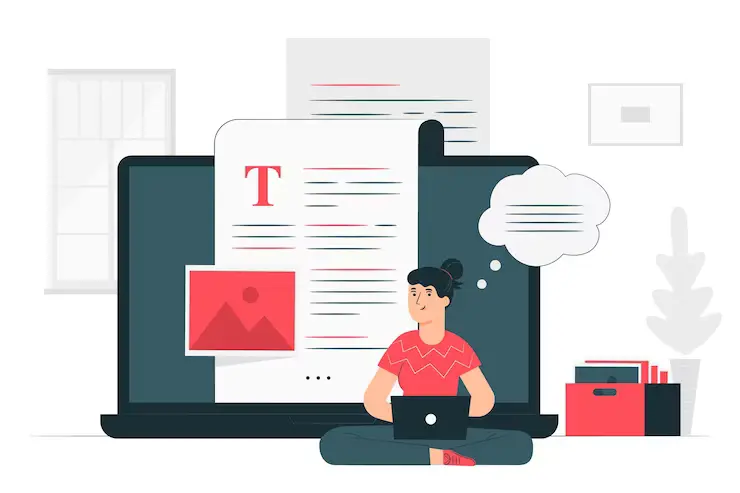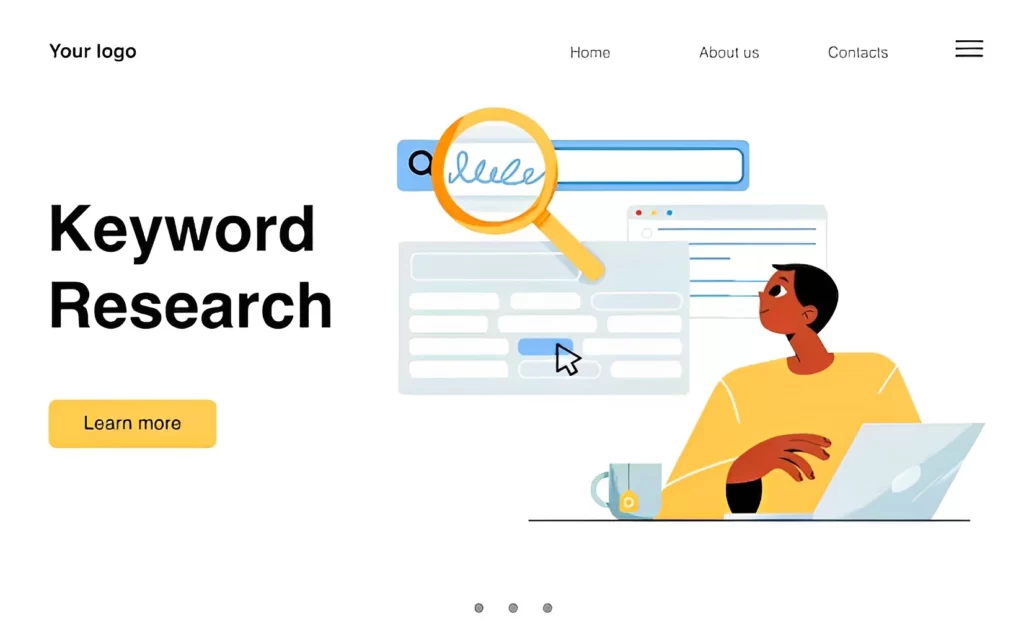Have you ever felt overwhelmed by SEO? I get it. But mastering on page optimization techniques can set you miles ahead. In this post, I’ll be breaking down 8 strategies that genuinely make a difference. Ready to elevate your website’s game?
Let’s First Understand The Role of On Page Optimization in SEO
On-page optimization is a fundamental aspect of SEO, focusing on enhancing individual web pages. This process includes refining meta tags, ensuring content quality, and the strategic use of keywords.
Understanding how on-page factors influence search rankings is crucial: they dictate how search engines interpret and index content. Such precision ensures accurate ranking, laying the groundwork for a site’s visibility.
On the other hand, off-page factors, like backlinks and social signals, play a different role. While on-page optimization ensures content is primed for search engines, off-page factors gauge a site’s authority and trustworthiness based on its relationship with other websites and users. As foundational as on-page optimization is, it works best when aligned with off-page strategies. Together, they form a holistic approach to SEO.
Now, Here Are The 8 Proven On Page Optimization Techniques
Header Tag Hierarchy
Search engines, as well as readers, value clarity and structure in content. Header tags—ranging from H1 to H6—play a pivotal role. H1 tags are reserved for the primary title, guiding search engines and users about the topic (Please use one H1 only per content). As we move to H2 and subsequent tags, they function as subheadings, breaking the content into understandable sections.
Using header tags correctly offers a two-fold benefit. Firstly, they provide a clear content structure, ensuring readers can quickly skim and understand key points. Secondly, these tags signal the information hierarchy to search engines, aiding in more accurate indexing.
Meta Description Craftsmanship
The meta description serves as a concise summary that entices users to click on your website when displayed in search results. Think of it as your content’s elevator pitch to potential visitors. A compelling meta description provides a snapshot of what users can expect from your content.
Remember this:
- Conciseness is Key
- Include Main Keywords
- Provide Value
- Avoid Duplication
High-Quality Content Creation
Original, well-researched content tailored to user search intent is vital. Integrating multimedia, like images and videos, enhances user experience. Avoiding duplicated content boosts SEO. For a deeper understanding of aligning content with user needs, check out this guide on determining search intent.
Remember this:
- Research: Understand your audience and their pain points.
- Outline: Organize main points and structure content logically.
- Originality: Craft unique content; avoid plagiarism.
- Fact-check: Ensure data and information are accurate.
- Engagement: Write clearly, engagingly, tailored to your audience.
Optimized Image Use
Here’s how to ensure your images work in favor of your content.
- Relevant Imagery: Choose images that resonate with your content and enhance the user’s comprehension.
- Compression & Formats: Utilize tools to compress images (below 500 KB file size) and adopt formats like WebP for improved speed and quality.
Use this tool to convert the file to WebP: Cloudconvert
Use this tool to compressed the image file: Tinypng
- Alt-Text & SEO: Incorporate descriptive alt-text for search engines and improve accessibility for visually impaired users. It’s also an opportunity to integrate keywords naturally.
- Responsive Design: Ensure images adapt and display correctly across various devices to enhance user experience.
- Copyright & Originality: Use unique or less commonly used images and always adhere to copyright laws, seeking permissions when required. For free images, try checking out the links below.
(Pexels, Pixabay, Unsplash, Canva)
URL Structure Best Practices
Keep your URLs concise. Studies have shown that shorter URLs tend to rank better on search engines. Avoid using long and complicated URLs that confuse users and search engines.
Remember this:
- Descriptive URLs: Ensure your URLs clearly show the page’s content. For example, instead of using a generic URL like “website.com/page123”, use something more descriptive like “website.com/seo-tips.”
- Use of Hyphens Over Underscores: Search engines prefer hyphens over underscores, especially Google. Using hyphens makes it easier for search engines to distinguish each word in the URL, enhancing readability and searchability.
- Avoid URL Parameters Where Possible: While dynamic parameters (e.g., ?id=123) are sometimes necessary for tracking or content filtering, they can complicate and elongate URLs. When possible, use clean and static URLs.
- Include Target Keywords: Just as you’d insert keywords in your content and meta tags, ensure they’re also present in your URLs. This reinforces relevance and can improve search ranking.
- Minimize URL Folders: Instead of creating a complex hierarchy like “website.com/blog/2020/seo/tips”, simplify it to something like “website.com/2020-seo-tips”. Too many folders can dilute the significance of the page and make it appear more profound and less critical.
Internal Linking Strategy
When internal linking is executed with precision, it serves as the roadmap, guiding both your users and search engines through the entire expanse of your website, ensuring every corner gets the attention it deserves. But how exactly can you maximize the potential of this technique?
- Descriptive and Relevant: Using text that hints at the linked content.
- Avoid Over-Optimizing: Keeping anchor text varied to avoid appearing spammy.
- Use Natural Phrasing: Make sure the text reads smoothly within the content.
- Stay Contextual: Linking to content that aligns with the topic at hand.
- Avoid Using Generic Terms: Such as “click here”, and aim for specific descriptions.
Optimizing Page Load Speed
Recall the last time you waited for a webpage to load. Annoying, wasn’t it? Page load speed is like the checkout line at a store. If it’s too slow, people walk out. But there’s more to it than just user impatience. Page load speed can also impact where your site ranks on search engines. So, what’s bogging down your website’s speed, and how can you give it that much-needed boost?
- Heavy Images: Oversized images can eat up loading time. Compress and optimize them.
- Too Many Plugins: Each plugin can add to your load time. Keep only what’s essential.
- Bulky Code: Clean and streamlined code can make a significant difference.
- External Embedded Media: Relying on external sources for media can slow down your site.
- Too Many Ads: We get it, ads are revenue. But too many can severely impact speed.
- Unoptimized CSS: Inline CSS and multiple stylesheets can drag your speed down.
Keyword Optimization
In the crowded online world, keyword optimization helps your content stand out and reach the right people. It’s about using the language your audience understands. For the best results, here’s how to place those keywords properly.
- Title: Your primary keyword should be prominently placed.
- Meta Description: Use keywords to drive click-through rates from search results.
- H1 Tags: Make sure your target keyword appears in the main heading.
- Content: Distribute keywords naturally and avoid overstuffing.
MUST READ: How to Do Keyword Research for Content Writing (2023 Guide)
A site’s soul is in its content; its strength, in on-page optimization.
– Brian Barcenilla
Common Mistakes in On Page Optimization
Here are some of the typical pitfalls to be aware of:
Keyword Stuffing
Overusing the target keyword to manipulate rankings can lead to penalties from search engines. It’s essential to maintain a natural flow of content.
Ignoring Internal Linking
Proper internal linking can spread page authority and help search engines better understand the content structure.
Ignoring Meta Descriptions
While they might not directly influence rankings, meta descriptions are crucial in click-through rates. A poorly crafted or missing meta description can deter users.
Using Duplicate Content
Having the same content across multiple pages can clear search engines and may lead to penalties.
Try this useful tool: Copyscape
Poor URL (slug) Structure
URLs that are long, filled with numbers, or don’t provide a clear hierarchy can harm users and search engines.
Not Using Header Tags Properly
Using H1, H2, and other header tags can disrupt the content structure, making it easier for search engines to understand its hierarchy.
Missing Alt Tags for Images
Failing to use alt tags for images can hamper accessibility and SEO, as search engines use these tags to understand image content.
Not Regularly Updating Content
Keeping content fresh and updated can signal to search engines that the website is maintained and relevant.
Questions to Ponder
- Are you tapping into the full potential of your content, or is there room for enhancement?
- How adaptive are you to the ever-evolving algorithms of search engines?
- Are you effectively gauging the impact and success of your optimization techniques?
While the on page optimization techniques we discussed are proven and crucial, success in SEO goes beyond just tactics—it requires a holistic strategy and an ever-curious mindset. Will you be a passive observer as the digital world develops or an active participant driving your content to the forefront?
The choice is yours. Make it count.
How did this article resonate with you? Share your reflections in the comments below!




